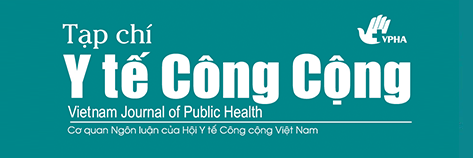A Time to Mourn: Cultural Considerations and Community Preferences for Verbal Autopsy in Vietnam
Abstract
Reliable mortality data becomes necessary to realise the full functioning of national health systems. Verbal autopsy (VA) is a viable tool to identify cause-of-death in Vietnam and has already utilised in a number of studies. This qualitative study (in-depth interviews and focus group discussions) had been done with the aim to examine the views of six ethnic groups in Vietnam on the suitable timing for implementing VA after a death. Recommendations on what were the suitable timing varied significantly between minorities ethnic groups, reflecting their particular cultural beliefs and burial practice. For the dominant Kinh people, the suitable timing for VA was around 49-100 days after the funeral. By providing better understanding of the best timing for VA interview, our study enables researchers to optimally use VA methods, producing more reliable data for mortality rates and cause of death in the lack of a complete vital registration in Vietnam.
Keywords
Full Text:
Download PDFReferences
http://www.gso.gov.vn/default.aspx?tabid=387&idmid=3&ItemID=14632. GSO 2012, accessed May 28, 2014.
Mahapatra P, Shibuya K, Lopez AD, Coullare F, Notzon FC, Rao C, Szretar S, and on behalf of the Monitoring Vital Events (MoVE) Writing Group. Civil registration systems and vital statistics: successes and missed opportunities. Lancet 2007;370:1653-1663.
Baiden F, Bawah A, Biai S, Binka F, Boerma T, Byass P, Chandramohan D, Chatterji S, Engmann C, Greet D, Jakob R, Kahn K, Kuni O, Lopez AD, Murray CJL, Nahlen, B, Rao C, Sankoh O, Setel PW, Shibuya K, Soleman N, Wright L, Yang G, 2007. Setting international standards for verbal autopsy. Bull World Health Organ. 2007;85(8):569-648.
Witter S. ‘Doi moi’ and health: the effect of economic reforms on the health system in Vietnam. Int J Health Plann Mgmt. 1996;11:159-172.
Huong DL, Minh HV, Byass P, 2003. Applying verbal autopsy to determine cause of death in rural Vietnam. Scand J Public Health. 2003;31(Suppl. 62):19-25.
Ngo AD, Rao C, Hoa NP, Adair T, Chuc NTK. Mortality patterns in Vietnam, 2006: Findings from a national verbal autopsy survey. BMC Res Notes. 2010;3:78.
Huy TQ, Johansson A, Long NH. Reasons for not reporting deaths; a qualitative study in rural Vietnam. World Health Popul. 2007;9(1):14-23.
Rao C, Osterberger B, Anh TD, MacDonald M, Chuc NTK, Hill PS. 2010. Compiling mortality statistics from civil registration systems in Viet Nam: the long road ahead. Bull World Health Organ. 2010;88(1):1-80.
Setel PW, Rao C, Hemed Y, Whiting DR, Yang G, Chandramohan D, Alberti KGMM, Lopez AD. Core verbal autopsy procedures with comparative validation results from two countries. PLoS Med. 2006;3(8):1282-1291.
World Health Organization. Ascertaining and attributing cause of death. Geneva: World Health Organization, non serial publication; 2007.
Chandramohan D, Soleman N, Shibuya K, Porter J. Editorial: Ethical issues in the application of verbal autopsies in mortality surveillance systems. Trop Med Int Health. 2005;10(11):1087-1089.
Soleman N, Chandramohan D, Shibuya K. Verbal Autopsy: Current Practices and Challenges. Bull World Health Organ. 2006;84(3): 239-245.
The “Evidence-based for Health policy in Vietnam” project sponsored by Atlantic Philanthropies for Health Strategy and Policy Insitute via University of Queensland. The quantitative VA study was implemented in Thai Nguyen, Hanoi, Hue, Ho Chi Minh City, and Can Tho.
Vietnam Museum of Ethnology. Vietnam Museum of Ethnology Catalogue. Hanoi: Vietnam Museum of Ethnology (Bao tang Dan toc hoc Viet Nam); 1998.
Gaudine A, Gien L, Thuan TT, Dung DV. Perspectives of HIV-related stigma in a community in Vietnam: A qualitative study. Int J Nurs Stud. 2010;47:38–48.
Malarney SK. Culture, Ritual and Revolution in Vietnam. University of Hawaii Press, Honolulu: University of Hawaii Press; 2002.



